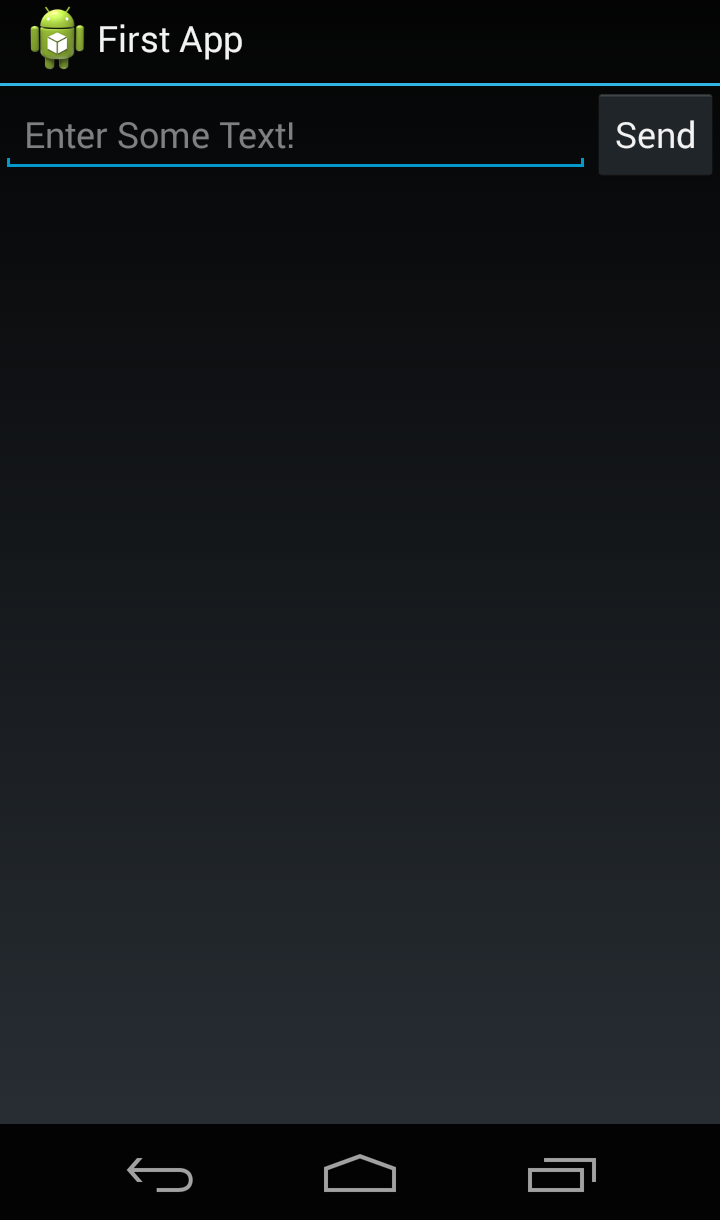Building a Simple User Interface The Ruboto Way
OK champ, you've slugged through awkward programmatic interfaces like Java::android.widget;
you've written and loaded XML resources; you've been through the murky waters of Android app
development and come out on top a winner!
It's now time to stand on the shoulders of giants and use some fancy tools that Ruboto is eager to provide.
ruboto/widget
Inside of your src directory you'll see a directory called ruboto. Go ahead and open-up widget.rb.
This file does something really great, it allows us to create widgets by just
- Importing them with the
ruboto_import_widgetsmethod - Calling a snake_case method name and passing a hash of parameters
It also allows us to add the widgets to a parent view (like a linear layout) by passing them into a block for the view.
Our entire user-interface becomes:
require 'ruboto/widget'
ruboto_import_widgets :LinearLayout, :EditText, :Button
class FirstAppActivity
def onCreate(savedInstanceState)
super
layout = linear_layout orientation: :horizontal do
edit_text layout: {weight: 1.0}, hint: "Enter Some Text!"
button text: "Send"
end
setContentView(layout)
end
end

Syntactic Sugar
To help everything be very Ruby-like we are also allowed to change our syntax a bit:
- We can change camelCase methods and variables to snake_case
- We can replace
setSomethingwithsomething= - We can replace
getSomethingwith justsomething
So for me the final layout is:
require 'ruboto/widget'
ruboto_import_widgets :LinearLayout, :EditText, :Button
class FirstAppActivity
def on_create(bundle)
super
layout = linear_layout orientation: :horizontal do
edit_text layout: {weight: 1.0}, hint: "Enter Some Text!"
button text: "Send"
end
self.content_view = layout
end
end
Sidenote - I changed the variable passed to onCreate back to the original bundle that
the Ruboto demo called it to start with. That's because the saved_instance_state is of type bundle
and bundle is shorter to type.
XML and Resources
Having seen the above you may be thinking that you'll never use XML. And depending on your application that might be true, but there are good reasons to use it and at the end of the day you will find yourself using other resources (such as pictures or language support strings).
Ruboto has a nice accessor to the R package for us which is loaded when you load ruboto/widget and comes from the ruboto/package file.
This file defines a class R and hooks it up to behave like the Java package. So the XML version of this can now
look like this:
require 'ruboto/package'
class FirstAppActivity
def on_create(bundle)
super
self.content_view = R.layout.first_layout
end
end
And that's all there is to it. Ruboto is awesome!